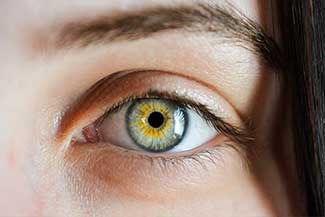
Specialty Contact Lenses For Presbyopia
As we get older our vision starts to change. Between the ages of 40 and 50, almost all people develop presbyopia (age-related farsightedness), which makes nearby objects appear blurry.
Reading glasses used to be the only option for contact lens wearers with presbyopia who wanted to perform tasks that require good near vision such as reading a book or menu.
Nowadays, several specialty contact lenses offer patients with presbyopia clear near and distance vision for ultimate visual comfort and convenience.
Contact Lenses for the Farsighted
Monovision
This is a vision correction technique in which the contact lens in one eye corrects for distance vision and the other eye for near vision. Basically, each lens has a different prescription.
Scleral Lenses
Scleral contacts are large-diameter gas-permeable contact lenses that vault over the entire corneal surface and rest on the white part of the eye (sclera) instead of the cornea.
Scleral contacts can also be designed as multifocal contacts for presbyopic patients to correct both farsightedness and nearsightedness. When compared to regular multifocal lenses, scleral lenses are firmly positioned on the eye, offering substantially better stability and comfort.
Multifocal
Patients who wear multifocal contact lenses are able to see at all distances without sacrificing depth perception. Those who participate in outdoor activities, use the computer regularly or don’t like using reading glasses to view their smartphone, tablet, or newspaper might consider multifocal contact lenses.
There are two basic types of multifocal contact lenses: simultaneous vision design and segmented vision design.
1. Simultaneous vision design – Concentric rings of distant and near powers encircle a primary viewing zone in the lens’s center. The central viewing zone is typically used to view distant things, although there are also center-near designs. Under other circumstances, the dominant eye is fitted with a center-distance design, whereas the non-dominant eye is fitted with a center-near design. These multifocal contacts are similar to concentric multifocal lenses, but instead of discrete rings of distance and near power encircling the lens’s center, the multifocal lens power gradually changes from distance to near (or near to distant) from the lens’s center to the periphery. Aspheric multifocal contact lenses are similar to progressive eyeglass lenses in this way.
2. Segmented vision designs – Bifocal and trifocal eyeglass lenses have a similar design to segmented multifocal contact lenses. The upper and center zones of the lens feature a zone for distant vision, while the lower half of the lens has a zone for near vision. A noticeable line in the lenses separates the distant and near zones.
These contact lenses are made of rigid gas permeable (GP) contact lens material. These lenses have a smaller diameter than soft contact lenses and rest above the edge of the lower eyelid on a layer of tears. A segmented multifocal contact lens stays in place as your look shifts downward for reading or seeing close objects, allowing you to see through the lower, near-correction part of the lens.
Rigid gas-permeable (RGP)
RGP contact lenses are composed of rigid silicone polymers that allow oxygen to pass through the cornea. Unlike soft contact lenses, they hold their shape and can often provide clearer vision than soft lenses.
Orthokeratology
Orthokeratology, also called ‘ortho-k’ lenses, are lenses that are worn overnight to reshape the cornea. Ortho-k can be used to correct both eyes for distance vision and be used as monovision and multifocal vision.
If you have presbyopia and are looking into your contact lens options, contact Ancaster Scleral Lens Centre to learn more about which specialty contact lenses are right for you.
Our practice serves patients from Hamilton area, Burlington, Brantford, and Cambridge, Ontario and surrounding communities.













